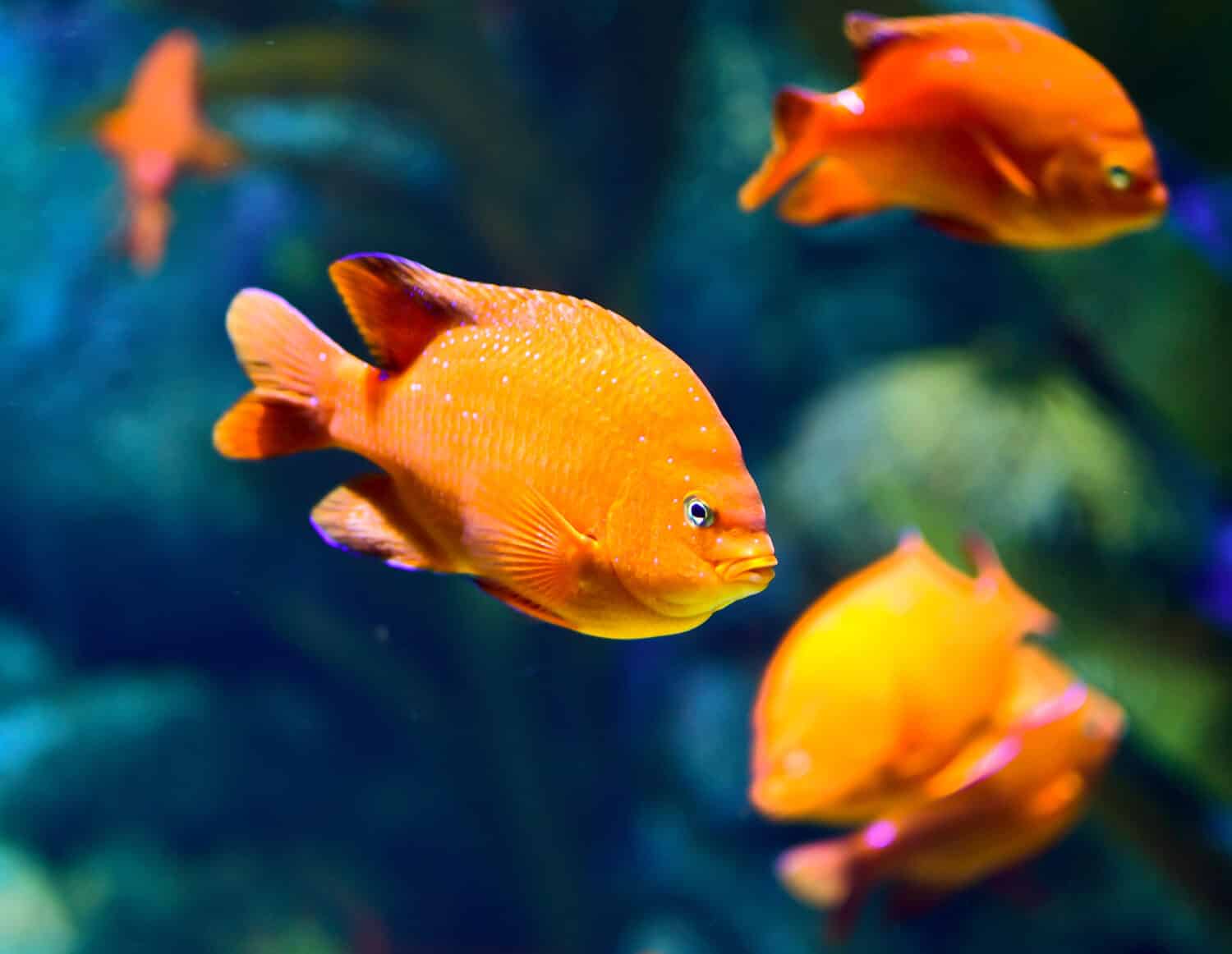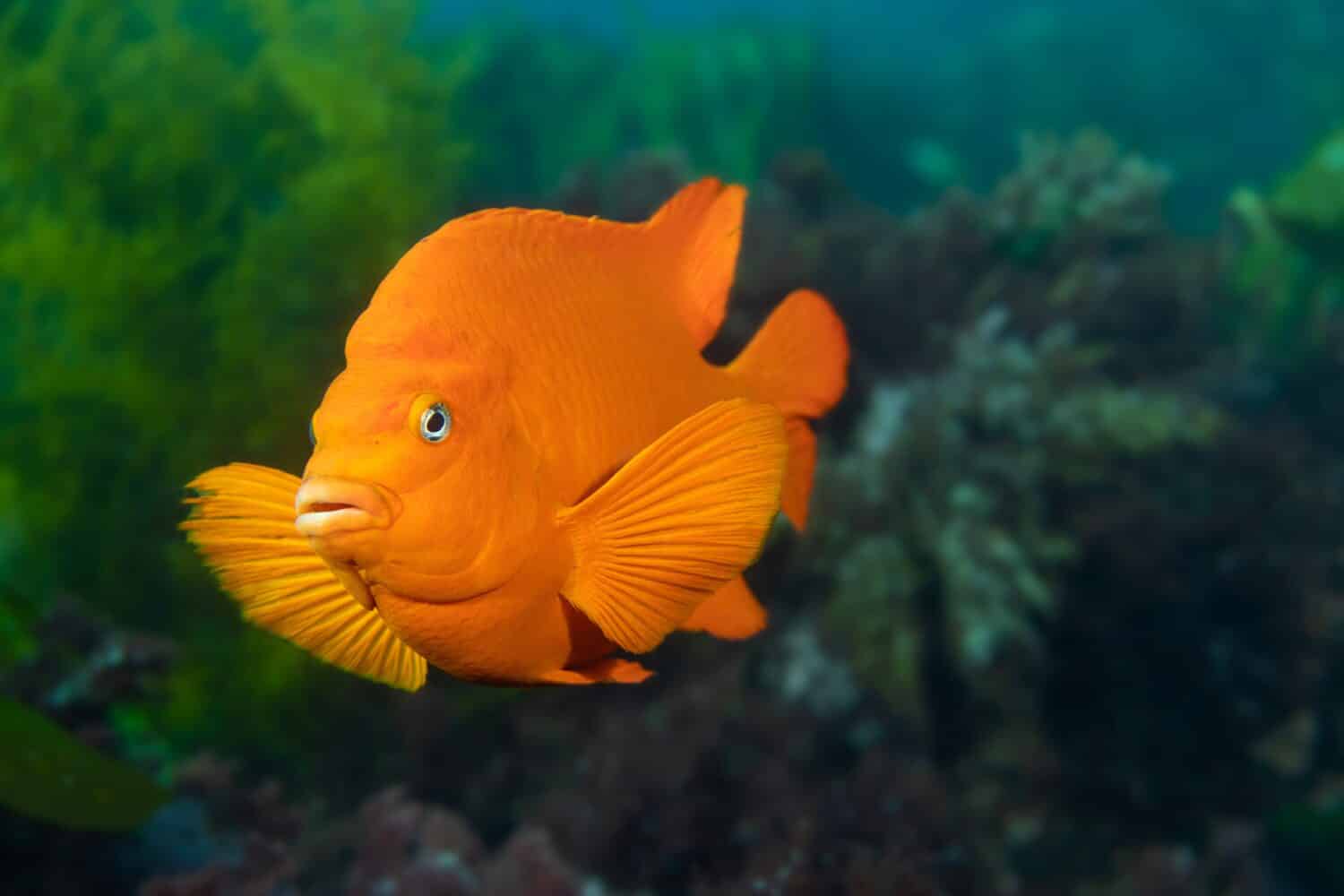California’s coastline has abundant fish and sea animals just waiting for you to explore. Beneath the waves, you will find fish of every shape, size, and species. However, only one is the official state marine fish. The garibaldi!
Garibaldi fish (Hypsypops rubicundus) is bright yellow territorial fish you might spot hiding in little holes on a rocky reef near shore. In 1995, they became the official California state marine fish to protect them from overfishing. Let’s learn all about garibaldi fish and where you can find them.

What Does Garibaldi Look Like?
Garibaldi is a plump, round, bright orange fish that grows up to 15 inches long and weighs up to 2 pounds, belonging to the damselfish family. They have an angled head with large lips, small mouths, and intense yellow eyes. In addition, this fish species has a flattened body covered in large scales.
Juvenile garibaldi is a vivid orange color covered in iridescent blue spots. In addition, they have black outlined large blue markings on their back and outlining their fins, disappearing when they reach 2 inches long. All the blue markings and spots will vanish when they reach 6 inches long.
With how striking garibaldi fish are, it’s no wonder they are the official California state marine fish!

Garibaldi is a striking orange fish that hide in rocks for protection.
©David A Litman/Shutterstock.com
Garibaldi Behaviors
Garibaldis are solitary fish that can live anywhere from 17 to 25 years. They never swim in schools, but you can find them scattered in groups a few feet above the bottom of the oceans during breeding times. They find homes in protective holes close to a feeding area so they can quickly retreat to safety.
Garibaldis are territorial and aggressive fish, mostly males. They will attack almost any fish near their home, even their own kind. When these fish attack, they make a clicking noise from hitting their throat teeth together.
Garibaldi Prey and Predators
Garibaldi is omnivorous, with a diet mostly being algal growth and bottom-dwellers. They normally hunt during the day and can pull fish and algae from underneath rocks. Occasionally, females will feed on their eggs.
Let’s take a look at the common diet of a garibaldi:
- Anemones
- Algae
- Crab
- Shrimp
- Sea stars
- Marine worms
- Sponges
- Bryozoans
Although these are aggressive fish, there are many predators looking for a garibaldi meal. Besides fishermen and divers, garibaldi’s natural predators include:
- Sharks
- Sea lions
- Seals
- Bald eagles
- Large fish

Garibaldi fish love to eat algae and small shrimp.
©InfiniteZero/Shutterstock.com
Where You Can Catch Garibaldi
Actually, you can’t catch garibaldi fish. According to the National Park Service, “Conservation actions have been taken by the State of California to fully protect the species,” making it illegal to catch them. However, since banning garibaldi fishing, the numbers have significantly increased. As a result, the IUCN Red List of Threatened Species states they are of “least concern.”
Thank you for reading! Have some feedback for us? Contact the AZ Animals editorial team.








